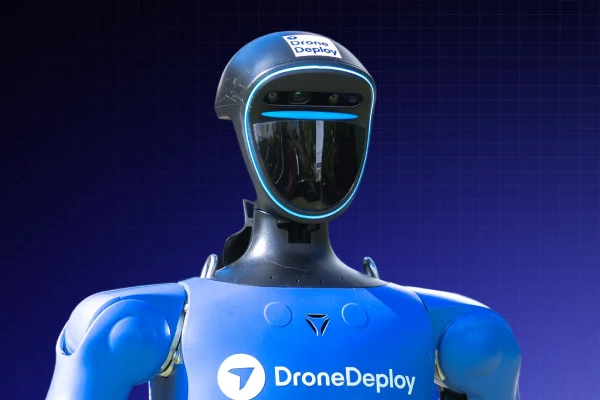Feel Good Friday: How Marine Scientists Are Using Drones To Study Whale Health

Quick Summary
While whales play a significant role in combating climate change, they are also one of the most affected species. Shipping, habitat loss, ocean acidification, and warming sea temperatures make these creatures increasingly vulnerable to extinction. And although the United States outlawed whaling in 1971, the global blue whale population was only 3-11% of the total population in 1911. According to the World Wildlife Fund, only around 400 North American whales remain, while 6 out of 13 other whale species register as critically endangered. With whales at the top of the ocean ecosystem, capturing tons of CO2 per year, it is imperative to protect them.
Capturing data on these populations is harder than it seems. While whales are gigantic, they are tough to find and study because of their unique behaviors. Often, an individual whale’s measurements - which contain essential information on their health - can only be recorded via crewed aircraft. Not only is this process expensive, but it also leaves a lot to chance, requiring estimation of when and where a whale will breach. Enter: drones. By using a low-cost, low-risk device to track and record these animals, scientists can make quick assessments of their health in a safe, non-invasive manner. Below are some of the unique whale studies supplemented by drone technology.

Tracking Activity
The most common use case for drones in this field is tracking whales’ behavior. To study the effects of a whale’s body condition in conjunction with the timing of its migration, Australian Ph.D. candidate, Grace Russell, uses drones to collect video footage of these animals in Australian waters. With the bird’s-eye view that a drone provides, she can categorize whales by age, species, and reproductive level to determine how these factors affect how whales respond to different environmental stressors. Funded by the Holsworth Wildlife Research Endowment/Ecological Society of Australia, the ultimate goal of this project is to assess whales’ body conditions at the time they reach breeding waters, and use this information for population recovery later on.
In an Arctic University of Norway study, drones are used to supplement existing methods of whale tracking. In a fjord with a hotspot of whale activity, marine biologist Ana Sofia Aniceto flies her drone, taking pictures every 3 seconds. This information, combined with acoustics, locates the animals when they vocalize and pinpoints the exact location of the whale in the fjord. Since scientists couldn’t rely solely on acoustics to study these animals (as they don’t always vocalize), drone imagery ensures that what they see manually is, in fact, a whale.

Collecting Samples
A specialized drone used by Australian scientists is pioneering research in whale health. This “snot-bot” drone is equipped with a petri dish and hovers at the whale’s blowhole to collect a sample of their breath. While unusual, this discharge contains lung bacteria, viruses, and DNA that provide a clear picture of the whale’s health. Research of this kind is both non-invasive and critical to understanding a whale’s body condition.

Taking Measurements
Previous to drones, a whale’s measurements came from deceased or stranded animals. Because of their large size and body length, this was no easy task, and frequently inaccurate due to bloating or deflation caused after death. Additionally, researchers could not extract other valuable information if the whale had been alive, such as migration patterns or breeding behaviors. After photographing over 80 southern right whales off the coast of Argentina, British Ecological Society scientists were able to obtain individual length, width, and height measurements using photogrammetry techniques. From here, they developed a model to calculate whale body mass - data not heavily studied - to determine minimum energy needed to grow. This study will be used to increase prey populations, and assess the effects of kelp gull harassment on these animals. However, this model can also be adjusted to fit other species.
With further advancements in drone technology, marine biologists expect drones to become standard equipment in their field. Like the ones above, numerous studies have proven their effectiveness in tracking, studying, and supplementing other research in a non-invasive and safe way. Information garnered from these projects is already being used to boost whale populations worldwide. If you’re interested in learning more about drones in conservation, read our piece on the Great Barrier Reef or visit our Drones For Good website.
Want to read our predictions for drone use in 2020? Download our new State of the Drone Market report.
FAQ
Related articles
Ready to manage your data from the very start?
Book a quick call to see how DroneDeploy streamlines capture from construction through building ROI.
.svg)
.png)


